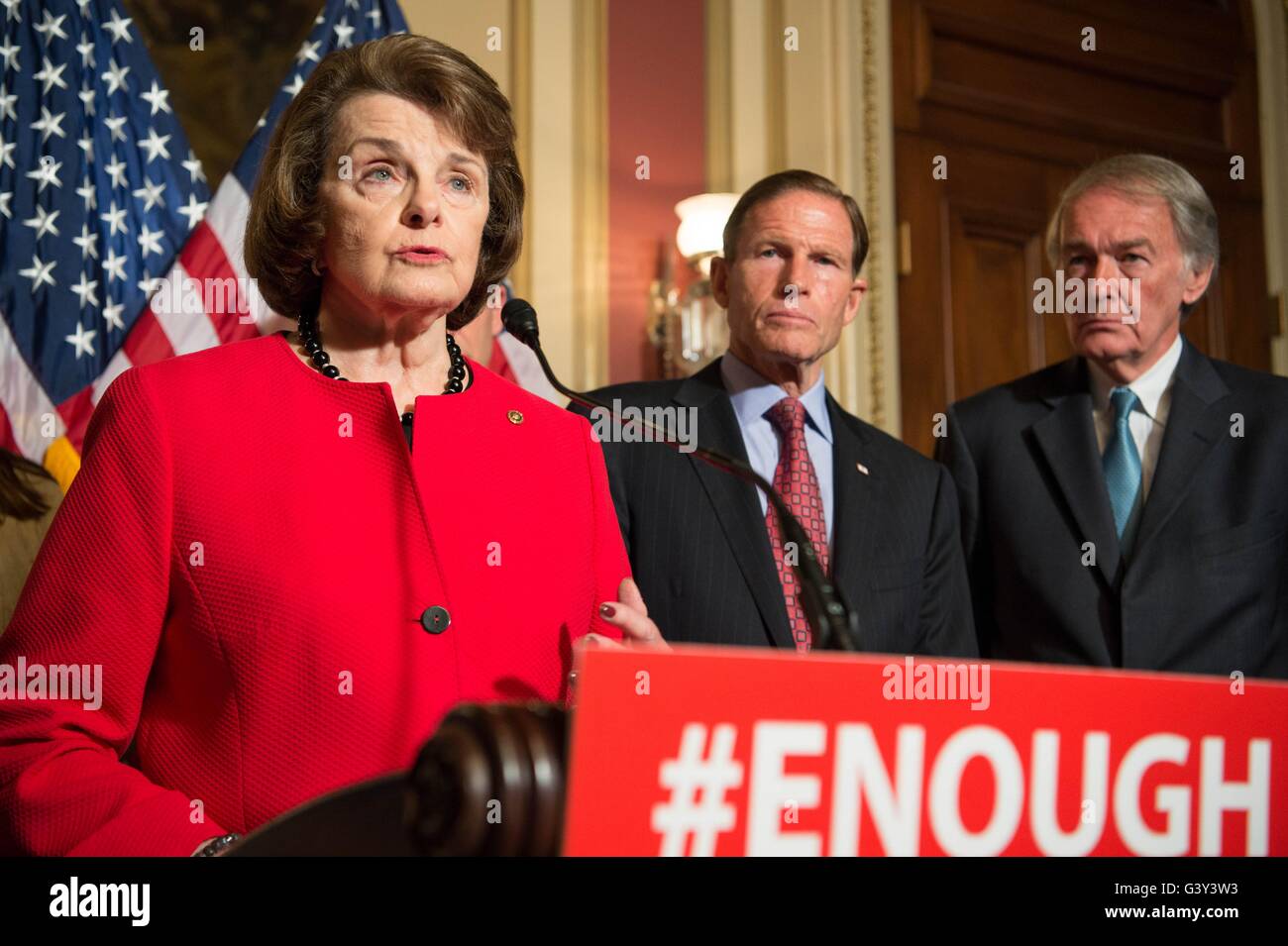
Feinstein, Markey Request GAO Study on Affordability of Nuclear Weapons
WASHINGTON (February 27 2020) — Senators Dianne Feinstein (D-Calif.) and Edward J. Markey (D-Mass) today requested that the Government Accountability Office (GAO) examine if nuclear modernization activities undertaken by the National Nuclear Security Administration (NNSA) are sustainable and affordable investments in our national security.
Since GAO’s last 2017 report recommending that NNSA address affordability issues for its program of work in fiscal year 2017, the Trump administration has moved in the opposite direction by increasing the role, types, and cost of US nuclear weapons.
President Trump’s fiscal year 2021 budget for NNSA’s weapons activities, for instance, calls for a 25 percent increase over last year’s funding level and well-above the level NNSA projected one year earlier. Additionally, the Pentagon projects spending $167 billion over the next five years on its side of the nuclear weapons enterprise.
“Questions about affordability are critical given the significant expansion in NNSA’s budget and activities,” write the senators in their letter to Gene Dodaro, controller of the United States. Specifically, the senators ask GAO whether NNSA has embraced its recommendation to consider “deferring or cancelling specific modernization programs.”
In their request, the senators note that the GAO analysis is made all the more urgent by the fact that nuclear-weapons spending could balloon further “should the president allow the New Strategic Arms Reduction Treaty (New START) to expire next February.”
In their letter, the senators ask for responses to questions that include:
- Has NNSA considered deferring or canceling specific modernization programs, per GAO’s 2017 recommendation?
- Which programs in the NNSA, other areas of the Department of Energy, or other US Government agencies will receive less funding to compensate of weapons activities budget increase?
- How would the potential expiration of New START in February 2021 affect the assumptions in the FY2021 budget estimate regarding future-years funding?

A copy of the letter can be found here and below.
The Honorable Gene Dodaro, Comptroller General of the United States
US Government Accountability Office, Washington, DC 20548
February 27, 2020
Dear Mr. Dodaro,
We write to request that the Government Accountability Office (GAO) conduct an assessment of the affordability of the National Nuclear Security Administration’s (NNSA) nuclear modernization programs. The GAO raised concerns in a 2017 report about the affordability of NNSA modernization efforts, and NNSA’s budget and activities have expanded significantly since that time.
GAO’s 2017 report characterized NNSA’s efforts at the time as “ambitious” and “costly,” and stated that “[t]he next decade represents a particularly challenging period for NNSA’s modernization efforts.”1 GAO recommended that NNSA assess the affordability of its modernization programs, including by “presenting options NNSA could consider to bring its estimates of modernization funding needs into alignment with potential future budgets, such as potentially deferring the start of or cancelling specific modernization programs.”2
Questions about affordability are critical given the significant expansion in NNSA’s budget and activities. For example, the President’s FY2021 budget requested a 25.2% increase for Weapons Activities, and further budgetary expansion is possible should the President allow the New Strategic Arms Reduction Treaty (New START) to expire next February.
Accordingly, we respectfully request that GAO conduct an analysis of the NNSA budget that addresses the following:
1) Is the “Affordability Analysis” section of the Stockpile Stewardship and Management Plan for FY20203 sufficient to “help NNSA put forth more credible modernization plans,” as recommended by GAO’s 2017 report?
2) Does the “Affordability Analysis” section of the Stockpile Stewardship and Management Plan for FY2020 indicate that NNSA has prioritized certain modernization programs? Has NNSA considered deferring or cancelling specific modernization programs, per GAO’s 2017 recommendation?4
3) Please compare NNSA’s major modernization activities as they appear in the President’s FY2021 budget to the major modernization activities (and associated costs) that NNSA was implementing prior to the release of the 2018 Nuclear Posture Review.
4) The NNSA Weapons Activities budget request for FY2021 is $15,602,000,000 and the projected FY2021 budget request in the FY2020 Future-Years Nuclear Security Program (FYNSP) was $12,793,804,000. What accounts for the disparity?
5) Which programs in NNSA, other areas of the Department of Energy, or other US Government agencies will receive less funding to compensate for Weapons Activities budget increases?
6) How would the potential expiration of New START in February 2021 affect the assumptions in the FY2021 budget estimate regarding future-years funding?
Thank you for your attention to this important matter.
Sincerely,
Edward J. Markey, United States Senator
Dianne Feinstein, United States Senator
1 US Government Accountability Office, National Nuclear Security Administration: Action Needed to Address Affordability of Nuclear Modernization Programs (April 2017), p. 40, https://www.gao.gov/assets/gao-l 7-341.pdf.
2 US Government Accountability Office, National Nuclear Security Administration: Action Needed to Address Affordability of Nuclear Modernization Programs (April 2017), p. 40, https://www.gao.gov/assets/gao- I 7-34 I .pdf.
3 National Nuclear Security Administration, US Department of Energy, Fiscal Year 2020 Stockpile Stewardship and Management Plan: Report to Congress (July 2019), p. 8-47, https://www.energy.gov/sites/prod/fi les/20 I 9/08/f65/FY2020 _ SSM P.pdf.
4 US Government Accountability Office, National Nuclear Security Administration: Action Needed to Address Affordability of Nuclear Modernization Programs (April 2017), p. 39, https://www.gao.gov/assets/gao-J 7-341.pdf.
Posted in accordance with Title 17, Section 107, US Code, for noncommercial, educational purposes.